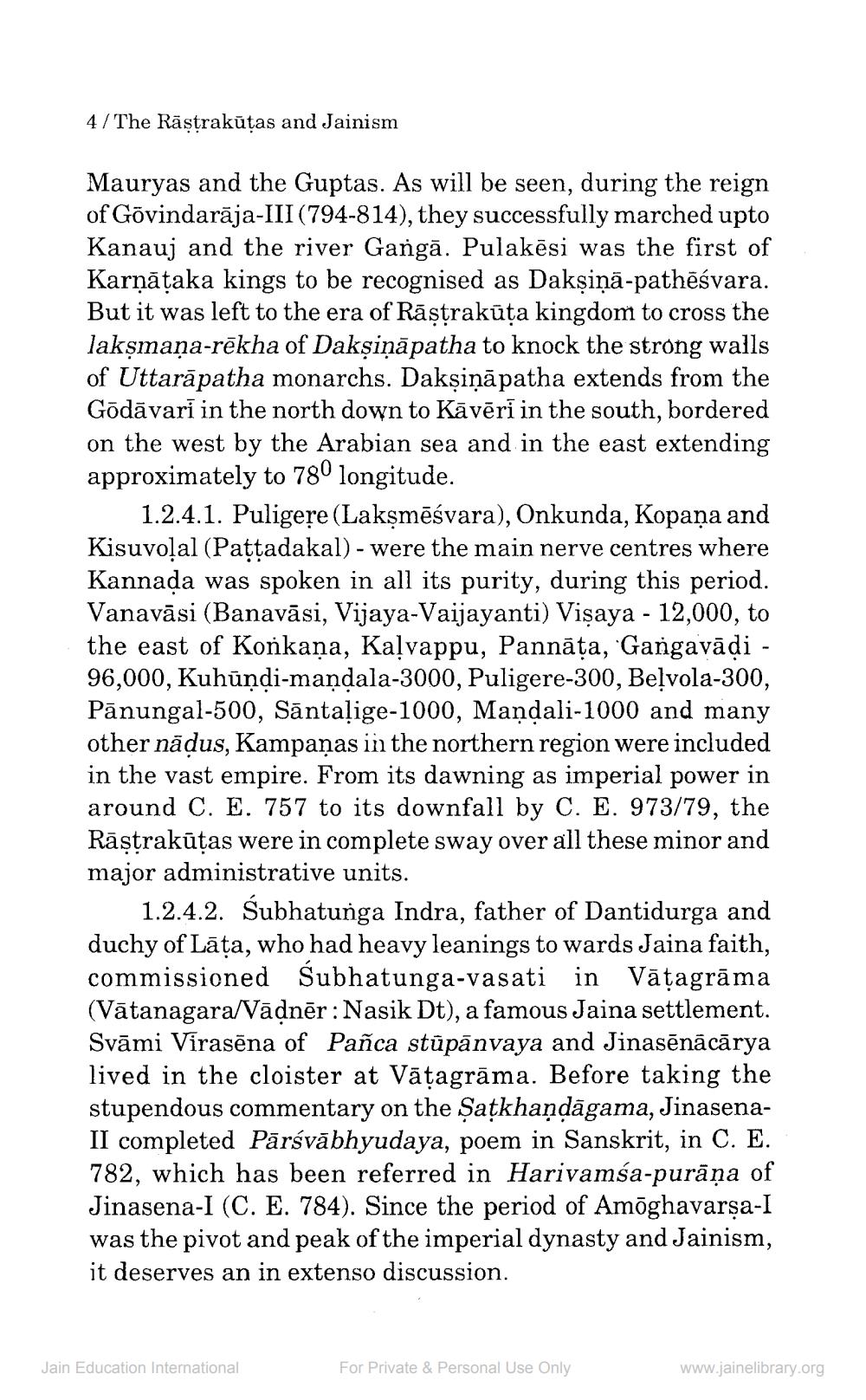________________
4 / The Rāştrakūtas and Jainism
Mauryas and the Guptas. As will be seen, during the reign of Govindarāja-III (794-814), they successfully marched upto Kanauj and the river Gangā. Pulakēsi was the first of Karņāțaka kings to be recognised as Dakşiņā-pathēśvara. But it was left to the era of Rāstrakūta kingdom to cross the lakṣmaṇa-rēkha of Dakşiņāpatha to knock the strong walls of Uttarā patha monarchs. Daksināpatha extends from the Gödāvari in the north down to Kāvēri in the south, bordered on the west by the Arabian sea and in the east extending approximately to 780 longitude.
1.2.4.1. Puligere (Lakşmēśvara), Onkunda, Kopaņa and Kisuvoļal (Pattadakal) - were the main nerve centres where Kannada was spoken in all its purity, during this period. Vanavāsi (Banavāsi, Vijaya-Vaijayanti) Vişaya - 12,000, to the east of Konkaņa, Kalvappu, Pannāța, Gangavādi - 96,000, Kuhūņdi-mandala-3000, Puligere-300, Beļvola-300, Pānungal-500, Sāntalige-1000, Mandali-1000 and many other nādus, Kampaņas in the northern region were included in the vast empire. From its dawning as imperial power in around C. E. 757 to its downfall by C. E. 973/79, the Rāstrakūtas were in complete sway over all these minor and major administrative units.
1.2.4.2. Subhatunga Indra, father of Dantidurga and duchy of Lāța, who had heavy leanings to wards Jaina faith, commissioned Subhatunga-vasati in Vātagrāma (Vātanagara/Vādnēr: Nasik Dt), a famous Jaina settlement. Svāmi Virasēna of Pañca stūpānvaya and Jinasēnācārya lived in the cloister at Vātagrāma. Before taking the stupendous commentary on the Satkhaņdāgama, JinasenaII completed Pārsvābhyudaya, poem in Sanskrit, in C. E. 782, which has been referred in Harivamsa-purāņa of Jinasena-I (C. E. 784). Since the period of Amõghavarşa-I was the pivot and peak of the imperial dynasty and Jainism, it deserves an in extenso discussion.
Jain Education International
For Private & Personal Use Only
www.jainelibrary.org




